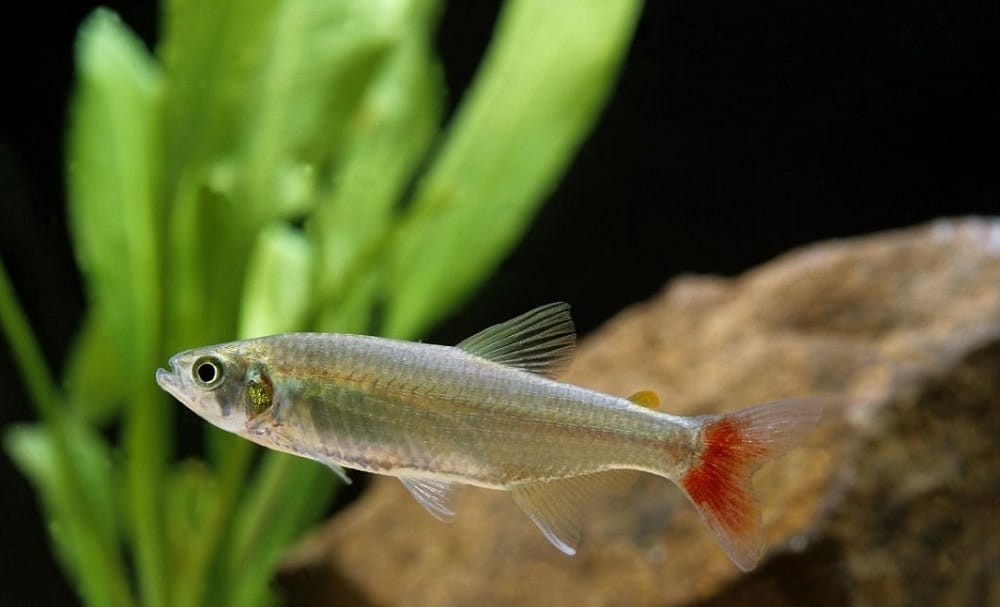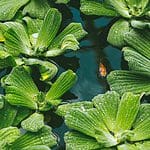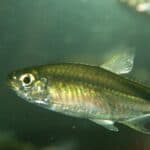The Bloodfin Tetra is a lively little freshwater fish popular among aquarists for being easy to care for and pretty resilient. They get their name from their lovely blood red fins, and they are also sometimes known as Redfin Tetra, True Bloodfin and Glass Bloodfin because of their reflective silvery bodies.
They hail from the Parana River basin in South America and are relatively sizable compared to other tetras, growing to an average of 2 inches in length.

They are schooling fish and will brighten up any tank, not just through their coloration but also because they are active and quite speedy. Bloodfin Tetras are great for beginner aquarists because they are low maintenance, generally sociable and beautiful.
Care Guide
Tank Size
Bloodfin Tetra require a minimum tank size of between 12-20 gallons due to the fact that they are schooling fish. You will need to have at least 5-7 fish to create a small school and they don’t cope well on their own.
If you have room for a larger tank then it will always be preferable because it will provide more swimming room.
Tank Mates
Bloodfin Tetras tend to be pretty sociable fish and get along well with other species that are the same size or smaller than them. They like calm, peaceful swimmers but don’t take too well to large or overly boisterous tank mates.
They can nip other fish, particularly those with long fins, if they start to feel testy, so best to stick to calm tank mates like shrimp, snails and crabs who are slow moving and chilled.
Equally, other tetras, cories and small Loricaiids work well as Bloodfin tank mates. Angelfish or guppies do not work well as Bloodfin tank mates due to their wavy fins.
Same Species Tanks
Bloodfin Tetras are happiest when amongst their own species and for that reason it is unwise to have less than six of them in a tank. Ideally, the bigger the school the better, but make sure that you have a large enough space to allow them to swim about as they like to be lively and animated.
Water Parameters
These fish tend to swim in the middle to upper areas of the water and they like a water PH that sits between 6 – 8.0. They flourish in cooler water temperatures of somewhere between 70-80 degrees Fahrenheit and it is for this reason that they are often kept in cold water aquariums or aquariums without heaters.
However, it is advisable to use a heater in your aquarium to ensure that the water temperature remains constant. Fluctuating temperatures can cause the fish unnecessary stress, but keep your water temperature stable and the Bloodfin Tetra will be hardy and happy.
Really, Bloodfin Tetras can adapt to lots of different water conditions when in captivity as long as the tap water has been dechlorinated.
What To Put In Their Tank
Because the Bloodred Tetra comes from the South American river basins, it is a great idea to try to recreate their natural environment as authentically as possible through the plants you put in their tank.
Live vegetation and lush greenery will work really well, however if live plants seem like they will require too much upkeep then Java moss is a great low maintenance alternative. It needs no looking after and thrives in most conditions.
You can of course also use artificial silk plants but you should steer clear of using plastic ones because they can damage the Bloodfin’s delicate body and leave them injured.
Common Diseases
In general, the Bloodfin Tetra is a tenacious and hearty fish. If the water parameters and tank conditions are kept stable, and you provide the fish with a well balanced diet, then you shouldn’t have many problems keeping these little guys healthy. However, they are susceptible to the usual freshwater fish diseases such as protozoa, skin flukes, worms and bacterial infections.
The good news is that they don’t spread disease amongst themselves very quickly, so if detected early only a few individuals will be affected by an outbreak.
It is important to thoroughly check for disease before adding anything new to your tank, and is always best to quarantine new fish and plants prior to introducing them.
Food and Diet
As the Bloodfin Tetra is such an active fish they will tend to burn off energy pretty quickly and therefore require quite a lot of feeding. As a general rule you shouldn’t give them any more than they can consume within three minutes.
In the wild they love to feed on small insects and worms and therefore it is best to recreate this as authentically as possible in their tank diet. They love tubifex worms, daphnia, brine shrimp and silk worms. You can also offer them dried and frozen food to ensure they get all the nutrients they require, and they enjoy classical flake food too.
It is advisable to vary their diet to keep it balanced, and switch between carnivore and plant and vegetable foods regularly.
Lifespan
As aforementioned, the Bloodfin Tetra is a hardy fish and if treated properly should live to between 5-7 years.
Appearance
These fish have an understated beauty that really comes alive when there is a large school of them swimming together. Their tail, dorsal, anal and adipose fins are all blood-red in color and create flashes of vibracy in the water.
Their bodies are a discrete silver tone, and can appear greenish when under certain tank lights. They are slender and swift and bring a great deal of energy to any aquarium community.
Size
The average Bloodfin Tetra is approximately 2 inches long when fully grown. This is large compared to most other tetra species but is quite small for a tropical aquarium fish.
Due to its small size, many aquarists like to buy a large number of them. They do not take up too much room in a tank and they enjoy being in a large school.
Behavior and Temperament
Though happy when in a large school, the Bloodfin Tetra can become shy or indeed stressed if it feels exposed. This happens most often if you isolate them or have too small a school.
Equally, if you put these fish in a tank with large and overly dominant tank mates then they can become alarmed and act out. When they feel insecure they nip the fins of larger fish, particularly those with long trailing tails.
Some nipping amongst each other is perfectly normal and to be expected. However, if this nipping develops then it is best to identify the nipper and remove it from the school.
They are fast swimmers and will bring lots of life and activity to a tank.
Breeding
When it comes to breeding the Bloodfin Tetra can be rather shy. They prefer to lay their eggs in private and therefore you should make sure that their breeding tank has low lighting and lots of covered areas.
The water should be more acidic in their breeding tank because soft water is essential to the females at this time. To encourage breeding, provide your fish with plenty of protein-rich food like brine shrimp.
When spawning occurs, the Bloodfin Tetra leaps above the surface of the water and lets her eggs sink to the floor. The eggs are heavy and approximately 300-500 of them will be laid on wide leaves on the tank floor, so be sure to provide plenty of suitable plants. It is important to remove the parent fish as soon as the female has laid her eggs to avoid her eating them!
The fry will consume the egg sac before hatching. Then you should feed them powdered fry food until they are large enough to have baby brine shrimp.
Gender Differences: Male vs Female
As with so many fish, the male Bloodfin Tetra is slightly more colorful than the female. He also has a small hook on his anal fin and a slender body. Female Bloodfin Tetras are plumper in general than their male counterparts, and they become rounded when they are pregnant.
Fun Facts
The Bloodfin Tetra are a wonderful addition to any aquarium. They are sociable and energetic, which makes them really enjoyable to observe. They are also beautiful in an understated way and their blood red fins add a flash of color to their otherwise silver bodies.
They are pretty low maintenance and are therefore a favorite amongst first-time fish keepers. Here are a few fun facts about them that will make you want to add a school to your aquarium immediately.
- They are egg-scatterers! This means that their eggs are non-adhesive and they leap up into the air as they lay them!
- They have teeth! Although they look tiny and harmless, these guys can get nippy if provoked.
- They have many names. As well as Bloodfin, Redfin, True Bloodfin and Glass Bloodfin, these guys also go by their latin name Aphyocharax anisitsi. Try pronouncing that in a hurry!








